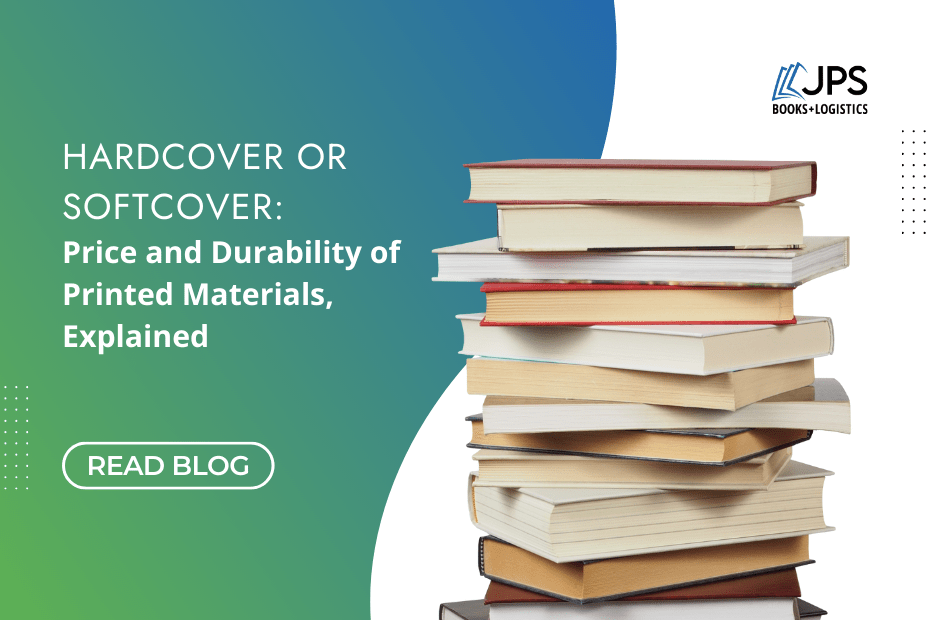The decision between a hardcover and a softcover isn’t just about how a book looks or feels; it’s a technical balance between cost, durability, and usage intent.
In this quick blog, we’ll explain the key differences between these two popular covering options, and shed light on the factors that can (and should) influence your book cover choice.
The Cost Conundrum
Let’s start with the elephant in the room: cost.
Softcover binding takes the lead in the affordability race. If you’re someone creating materials and working with a budget, softcovers are always a sensible choice. Why? The production cost is lower, making it an excellent option for large print runs or tight financial constraints.
Who Is Softcover Good For?
School libraries, corporate businesses, and independent authors alike can benefit from the cost-effectiveness of softcover binding, which allows them to distribute their works and reduce out-of-pocket production costs at the same time.
On the other hand, hardcovers tend to be pricier, with production costs running 1.5 to 2 times that of their softcover counterparts.
However, don’t let the price tag discourage you. Hardcover books have their niche, and many clients are willing to invest in the elevated quality and durability they provide.
Who Is Hardcover Good For?
Academic institutions, particularly colleges, and public school systems, are prime candidates for the benefits of hardcover books. Due to the high volume of use typically seen with textbooks and printed learning materials, a hardcover option is a great choice for institutions looking to minimize wear and tear and elongate the life of their printed materials.
The Durability Dilemma
When it comes to durability, softcover books can certainly hold their own—especially with the option of a UV-coated or laminated cover.
But while this certainly adds a layer of protection, it’s essential to acknowledge that softcovers are still made of paper. This means they can be susceptible to devaluation due to frequent use, including cosmetic creases and tears.
Enter the hardcover, the heavyweight champion of durability!
If your book is destined for frequent use, like a reference guide in a bustling corporate office or a well-loved 101 textbook in an academic setting, a hardcover is your go-to choice. The sturdy, rigid construction provides unmatched protection, ensuring your book can withstand the test of time and countless late-night study sessions.
Tailoring Your Choice to the Audience
Before you let cost be your only deciding compass, consider the intended audience and purpose of your book when deciding between hardcover and softcover.
For academic institutions, where textbooks and reference materials endure rigorous daily use, hardcovers aren’t just a logistical preference—they’re a wise investment.
The upfront cost may be higher, yes, but the long-term benefits in terms of durability and longevity outweigh the initial expense for years to come.
In the corporate world, just the sight of hardcovers exudes professionalism. Imagine presenting a softcover book during an important business meeting versus a weighty, high-quality hardcover manual or portfolio.
Hardcover not only makes a lasting impression, but also reflects the commitment to quality, longevity, and excellence.
For corporate reports, presentations, or employee handbooks, a hardcover adds a touch of sophistication.
For independent authors or businesses working on a tight budget, softcovers are a safe, practical choice. They strike a balance between affordability and quality, making them suitable for novels, brochures, and marketing materials. Softcovers can also be an excellent option for promotional giveaways, allowing you to share your message without breaking the bank.
Understanding the Niche: When to Choose Which?
While cost and durability are crucial factors, understanding the niche each type of cover serves can help you make a more informed final decision.
Softcovers are versatile and work well for novels, pamphlets, and marketing collateral. They’re cost-effective and ideal for projects with a focus on reaching a broad audience.
Hardcovers, with their premium look and superior durability, are perfect for academic textbooks and corporate publications. If your goal is to create a lasting impression or provide a long-lasting resource, investing in hardcover binding is a smart, strategic choice.
Where Can I Order Hardcover or Softcover Books?
At JPS Books + Logistics, we recognize that the choice between hardcover and softcover isn’t a one-size-fits-all decision. It’s about understanding your goals, audience, and budget to make the right choice for your project.
In the end, whether it’s the cost-effective charm of a softcover or the robust elegance of a hardcover, JPS Books + Logistics has the expertise to bring your vision to life!
Let’s embark on this publishing journey together, creating high-quality books and kits that stand the test of time—no matter which covers you choose.


